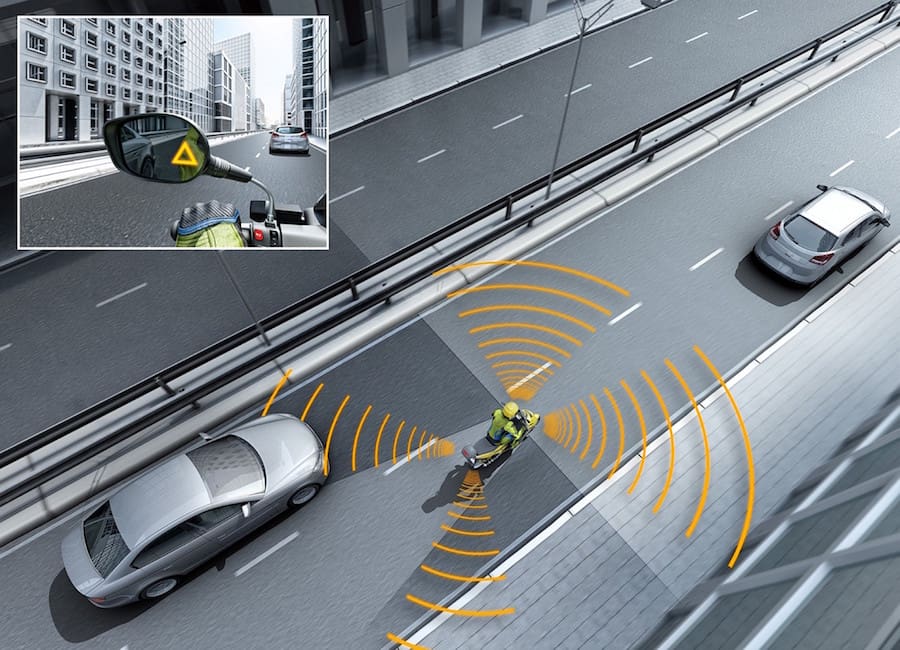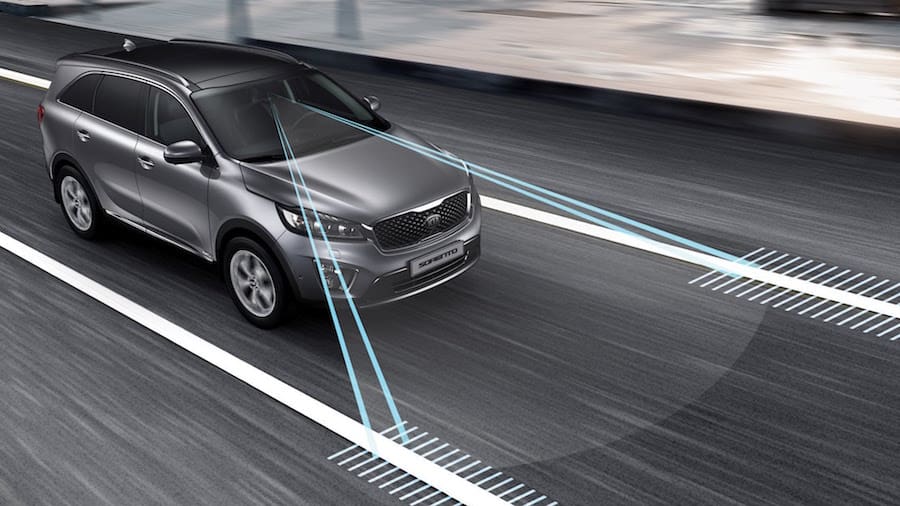Ducati says it will have a radar-equipped production model on sale in 2020. While the designated model was not specified, details of the system reveal it will feature both front and rear radar systems that will provide the basis for an unprecedented level of rider assistance.
Taking a leaf from the car industry, Ducati has developed front- and rear-facing radars with the help of the Politechnico di Milano.
Ducati has already applied for one patent on the designs and says they’ll be in production within two years.
The front radar is intended to work in concert with a cruise control system.
Like the adaptive cruise controls already available on many cars, the set-up will allow the bike to maintain a safe distance from the vehicle ahead when the cruise control is turned on.
Ducati hasn’t yet said whether its first-gen system will go so far as to be connected to the brakes as well, but it seems more than likely the technology is heading in that direction.
Initially, the rear-facing radar will provide a blind-spot detection system for bikes, providing a visual and audio warning if there’s a vehicle somewhere in the rider’s blind spot.
On a wider scale, the advent of radar systems on bikes is an important move and one that’s likely to progress fast.
Ducati’s rivals aren’t expected to sit on their hands while the Italian firm develops its system, so don’t be surprised if we see other companies announcing similar ideas shortly.
Ducati also says its rear-facing system will alert the rider if there’s fast-approaching traffic from behind.
Given how fast other safety technologies like ABS and traction control have advanced on bikes in recent years, it’s likely we’ll see two-wheelers continuing to follow the path laid down by their four-wheeled cousins.

Safer Ducatis
Ducati’s announcement is part of the firm’s 2025 Safety Road Map project, and the radar is part of a suite of kit going under the acronym ARAS – Advanced Rider Assistance Systems.
Ducati said all its bikes will at some time adopt the Bosch cornering ABS system already fitted to many of its high-end models.
Sound familiar?
That’s because Bosch released a similar but less advanced system at EICMA in 2015. Dubbed Side View Assist, it used four sensors mounted at each corner of the motorcycle. Using ultra-sonic technology that spans a distance of five metres, the sensors detect if there’s a solid object in its vicinity and alerts the bike, which (like the similar car-based technology) sends a visible warning to the rider via the mirrors. Regardless of how close the bike gets to an object, however, the system will not intervene with the bike’s control.
The challenges
Radar systems in cars allow steering-correction to keep vehicles in-lane, adaptive cruise control, and auto braking that reacts to sudden slowdowns or even stopped traffic ahead.
But sudden hard autonomous braking of a motorcycle could actually add danger. The rear-facing radar will include a warning system for fast-approaching vehicles to avoid the dangers of a rear-end collision. How to notify the rider of imminent danger is another area unique to motorcyclists. The new warning features could be incorporated into a heads-up display projected onto the helmet visor.

Ben Purvis











